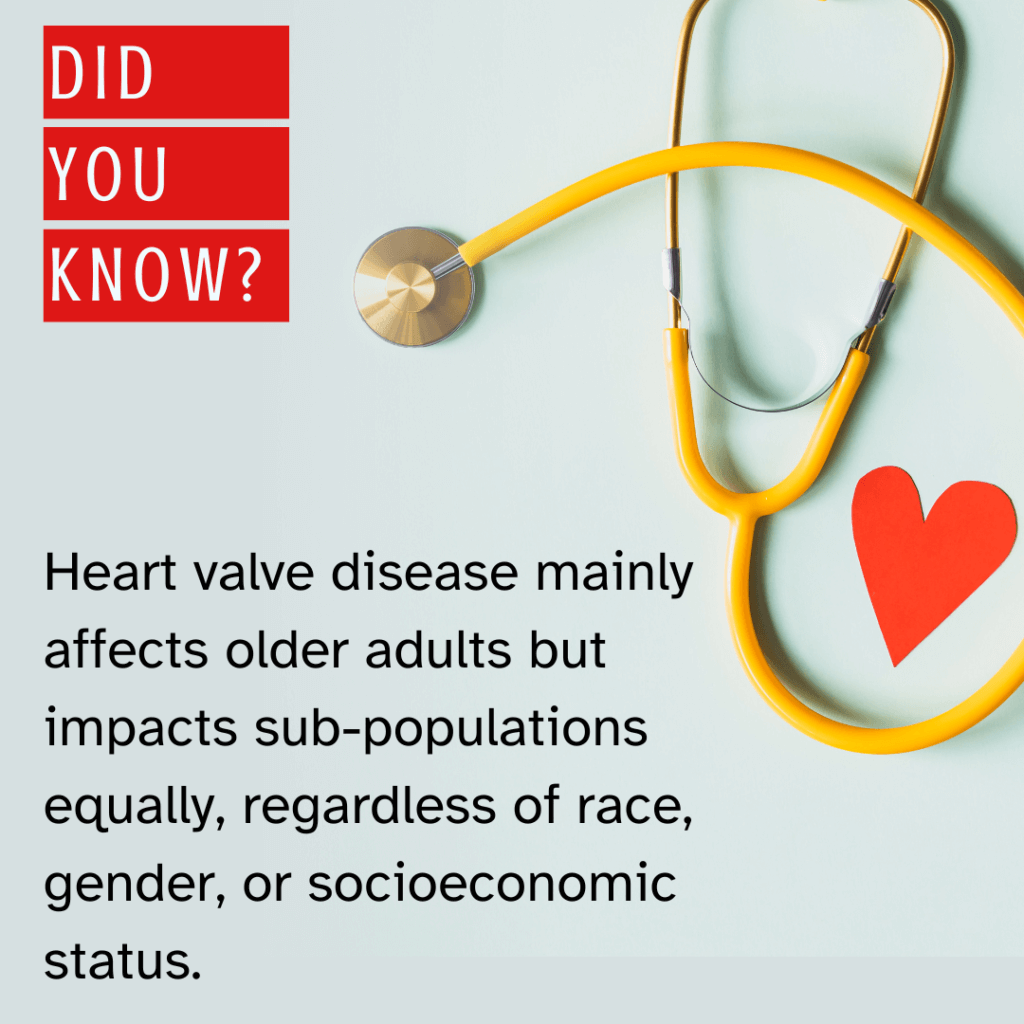Understanding the Prevalence of Heart Valve Disease
Heart valve disease is a serious health condition that often goes unnoticed until it reaches an advanced stage. This disease, which involves damage to one or more of the heart’s valves, can lead to significant health complications if not properly managed.
Who is Affected?

While heart valve disease can affect anyone, it disproportionately impacts older adults. As we age, the wear and tear on our heart valves can lead to issues such as stenosis (narrowing of the valve) or regurgitation (leaking of the valve).
Demographic Considerations
Heart valve disease affects various demographic groups relatively equally, irrespective of race, gender, or socioeconomic status. This means that anyone, regardless of their background, is at risk and should be vigilant about their heart health.
Symptoms to Watch For
Common symptoms of heart valve disease include:
- Shortness of breath
- Fatigue
- Swelling in the ankles and feet
- Irregular heartbeat
Early detection is crucial for managing the disease effectively. Regular check-ups, especially for older adults, can help catch the disease before it progresses too far.
Diagnosis and Treatment

Diagnosis of heart valve disease typically involves a combination of physical exams, imaging tests such as echocardiograms, and sometimes more advanced tests like cardiac MRI or CT scans. Once diagnosed, the treatment plan can vary depending on the severity of the condition.
Treatment options may include:
- Medications: To manage symptoms and prevent further complications.
- Lifestyle Changes: Such as diet modifications, exercise, and quitting smoking.
- Surgical Procedures: In severe cases, valve repair or replacement surgeries may be necessary.
Raising Awareness
Awareness about heart valve disease is essential for early diagnosis and treatment. By understanding who is at risk and recognizing the symptoms, we can take proactive steps towards maintaining heart health.
While heart valve disease predominantly affects older adults, it does not discriminate based on race, gender, or socioeconomic status. Awareness and regular health check-ups are key to managing this potentially life-threatening condition.
